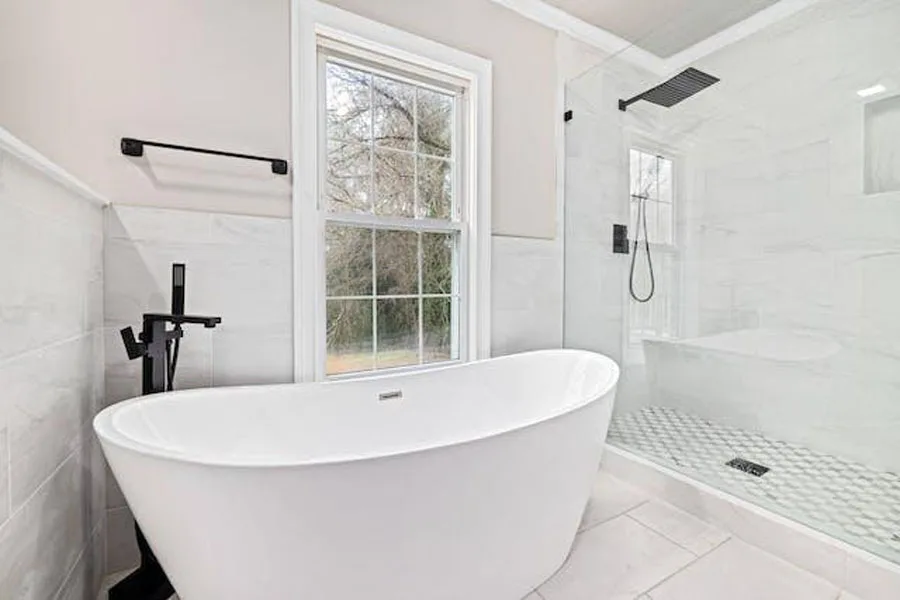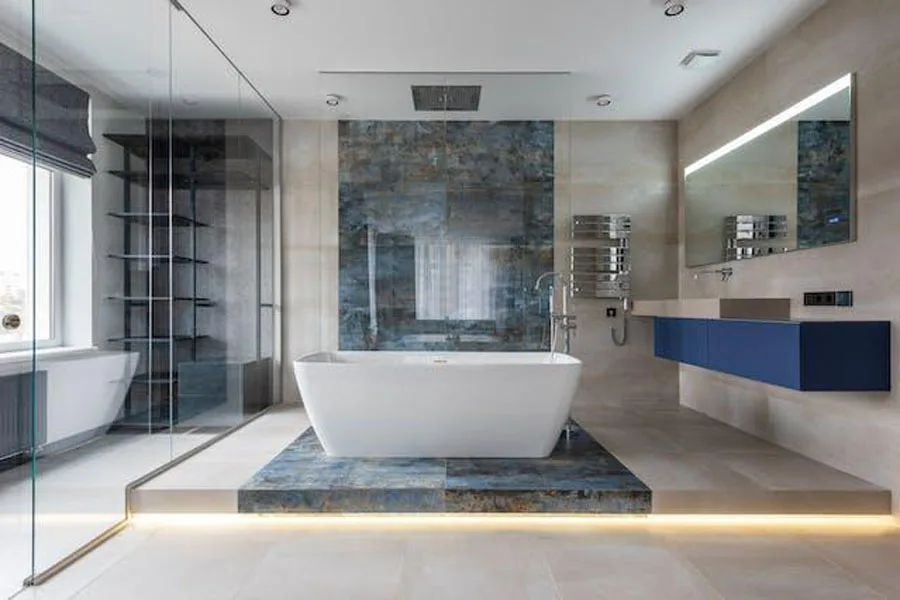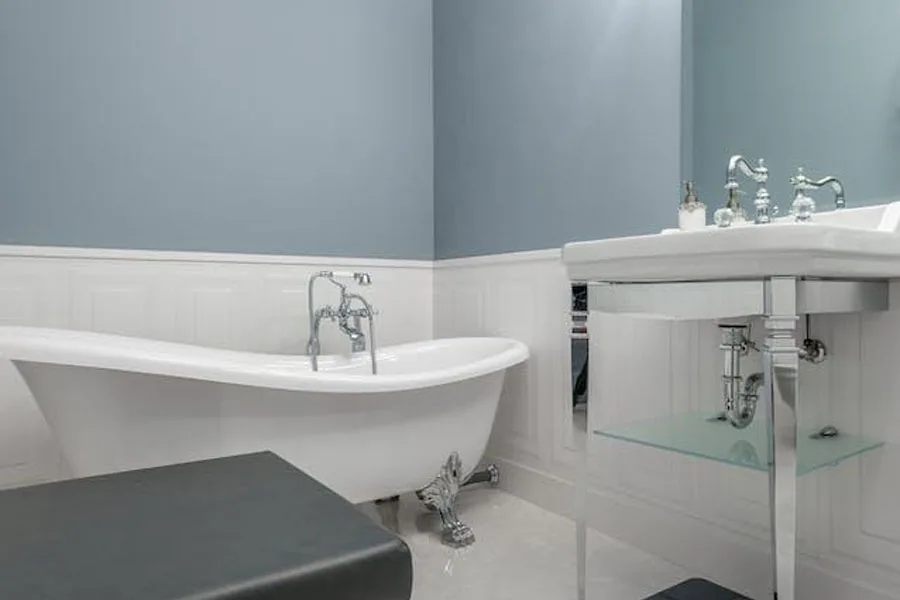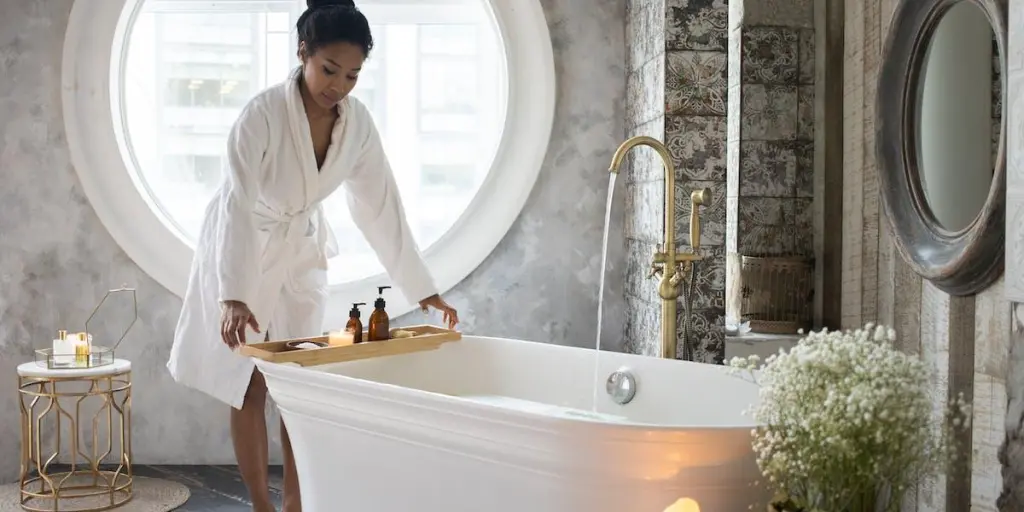Freestanding bathtubs offer several compelling reasons for buyers to consider incorporating them into their homes. From a health perspective, these tubs provide a deeper soaking experience, promoting relaxation and potentially reducing stress levels. The word “freestanding” describes bathtubs that are finished on all four sides and rest on the floor without the requirement of being fixed to a wall.
The tubs are available in various sizes, shapes, and styles to accommodate a wide range of tastes in bathroom design. Freestanding bathtubs offer safety due to their slip-resistant surface and lack of sharp edges, making them ideal for families with young children. Read on to discover how to choose the best freestanding tubs for your store.
Table of Contents
The global outlook for freestanding bathtubs
What to look for when selecting freestanding tubs
7 best freestanding bathtubs for 2024
Conclusion
The global outlook for freestanding bathtubs

In addition to providing you with a spa-like hideaway, a freestanding tub can be the center of attention that unifies the design of your bathroom. The market for free-standing bathtubs was valued at USD 3,116 million in 2021 and is anticipated to grow at a compound annual growth rate (CAGR) of 5.50% to reach USD 4,532.9 million by 2028. Factors that have led to increased demand and growth include:
Increased number of spas
The growing demand for freestanding bathtubs is linked to the growth of spas worldwide. As spas expand, people become accustomed to the luxury and style of standalone tubs, leading to a desire for a spa-like experience with related products at home. This has fueled demand for these luxurious bathing fixtures.
Social media influence
The visual appeal of freestanding bathtubs is frequently showcased on social media platforms, influencing consumer preferences and driving demand. Influencers have been showcasing themselves in freestanding bathtubs, and this has influenced followers to want to experience the same luxury.
Home value enhancement
Homeowners recognize that installing a freestanding bathtub can enhance the resale value of their homes, making it an attractive investment. Potential buyers are often drawn to the allure of a well-appointed and luxurious bathroom, and a freestanding tub is a focal point that adds a touch of opulence and sophistication.
What to look for when selecting freestanding tubs
Size
Wholesalers should carefully consider the size of freestanding bathtubs, ensuring versatility in accommodating different bathroom spaces. Offering a range of standard and ergonomic sizes caters to diverse user preferences and facilitates easy installation.
Material
Freestanding bathtubs are available in various materials, such as resin, stone, acrylic, ceramic, porcelain, copper, and cast iron. Acrylic is the most popular material for freestanding tubs because it is readily available, reasonably priced, and lightweight. Although cast-iron tubs are very sturdy, their weight may require buyers to reinforce the flooring in an upstairs bathroom.
Style
Different styles can influence the aesthetic appeal of freestanding tubs. Wholesalers should curate a selection that accommodates diverse design preferences, ranging from sleek and compact to more expansive and luxurious styles.
Faucet
Choosing the right bathtub comes with considering the faucet placement. Wholesalers should ensure the faucet complements the bathtub design and offers a diverse range to cater to varying consumer preferences, enhancing the overall bathroom experience.
Accessories
When selecting freestanding tubs for your customers, choose tubs that have additional features as accessories, such as tub caddies, foot coasters, bubblers, and whirlpool massage systems. These features make the tub more sought-after and provide the ideal spa-like experience.
7 best freestanding bathtubs for 2024
1. Japanese soaking tub
The Japanese bathtub is a traditional soaking tub deeply rooted in Japanese culture, perfect for small spaces. These compact and deep tubs are designed for relaxation rather than washing and are integral to Japanese bathing rituals.
Typically made from acrylic, the bathtub emphasizes a serene and meditative bathing experience, reflecting the cultural importance placed on tranquility and mindfulness in Japan.
2. Clawfoot tub

The clawfoot bathtub, with its distinctive raised legs, is an enduring symbol of vintage elegance in bathroom design. These freestanding tubs have evolved to include materials like acrylic while maintaining their classic appeal. Renowned for their timeless charm, clawfoot bathtubs continue to be sought-after, blending historic aesthetics with contemporary luxury in home interiors.
3. Pedestal tub

The pedestal tub is a sleek and minimalist addition to modern bathrooms, characterized by its simple, standalone design. Elevated on a pedestal or base, this freestanding tub exudes contemporary sophistication. With clean lines and a focus on aesthetics, the pedestal tub is a stylish centerpiece that balances functionality and visual appeal in modern interior design.
4. Whirlpool tub
The whirlpool tub is a luxurious and therapeutic addition, featuring built-in jets that create a soothing, massaging effect. Crafted from materials such as acrylic or fiberglass, these freestanding tubs offer a spa-like experience within the confines of one’s home.
Known for promoting relaxation and relieving muscle tension, the whirlpool tub combines functionality with indulgence, making it a popular choice for those seeking a rejuvenating bathing experience.
5. Slipper tub

The slipper tub is an elegant and ergonomic design characterized by its raised backrest on one end, resembling a slipper shape. This freestanding tub invites users to recline comfortably, creating a luxurious bathing experience. Renowned for its vintage charm and practicality, the slipper tub is a stylish focal point in bathrooms, offering visual appeal and enhanced comfort.
6. Single-ended tub

Single-ended tubs are designed with a rounded end and a straight, squared end. They offer a comfortable reclining space for a relaxing bathing experience. Ideal for compact bathrooms, these freestanding tubs combine space efficiency with comfort, making them a popular choice for those seeking a stylish yet practical bathing solution.
7. Double-ended tub
The double-ended tub boasts a symmetrical design with both ends rounded, offering a more spacious and versatile bathing experience, making it ideal for those who enjoy shared baths or simply desire a more symmetrical aesthetic in their bathroom design.
Conclusion
The various options for freestanding tub designs cater to a broad consumer spectrum, from classic clawfoot elegance to modern whirlpool luxury. Wholesalers can stay ahead by curating a selection that embraces these variations and meets evolving market demands.
Explore the possibilities, enhance your inventory, and captivate consumer interest by incorporating a comprehensive range of freestanding bathtubs into your offerings today.




